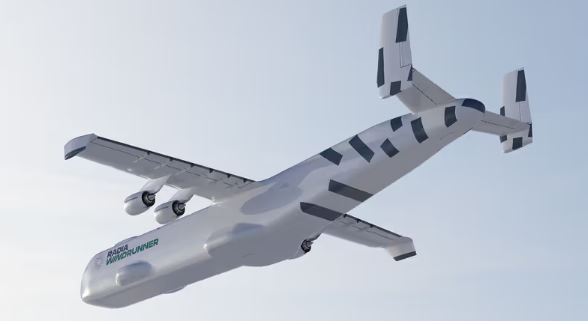Lifestyle
Windrunner, the new largest plane in the world that can fit 3 Olympic swimming pools

In the face of the global energy crisis, the development of onshore wind farms seems to be a tempting prospect.
The plane, dubbed WindRunner, is designed to deliver giant blades over 300 feet long directly to wind farms.
Moreover, to contribute to global decarbonisation efforts, WindRunner will use sustainable aviation fuel.
Additionally, it will not require complicated infrastructure – a simple runway with a dirt or gravel surface will be enough.
The company announces that WindRunner will operate from regional hubs, delivering goods where they are needed most. Moreover, the plane will be able to land on runways only 1.8 thousand meters high. meters – which is impossible for other large commercial aircraft.
WindRunner is designed to impress not only with its mission, but also with its specifications. Its hold will have a capacity of almost 8,000 cubic meters, which is equivalent to three Olympic swimming pools. This is 12 times more than in the case of the Boeing 747-400. Moreover, the length of the plane is to be over 100 meters.
The plane’s wingspan will be approximately 75 meters – which can be compared to four bowling lanes stacked on top of each other. The WindRunner is also expected to surpass the Antonov An-225, the heaviest plane ever built, which was destroyed at the beginning of Russia’s invasion of Ukraine.
Despite the plane’s impressive scale, Radia says the engineering on it will not be experimental. The company focuses on using proven and safe aviation technologies that are approved by the US Federal Aviation Administration (FAA).
Radio’s plan assumes the rapid launch of a fleet of WindRunners that meet aviation industry standards. Although some online sources suggest the launch of commercial operations as early as 2027, the company has not yet confirmed an official timeline.
Radia bases its plans on forecasts by the Bloomberg NEF research organisation, which predicts that up to $10 trillion will be spent on the development of onshore wind energy by 2050. With WindRunner, Radia aims to enable the development of GigaWind – giant wind turbines that are expected to be two to three times more powerful and cost-effective than those currently in use.






